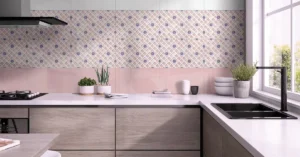When it comes to creating a comfortable and healthy living space, airflow might not be the first thing that comes to mind. However, ensuring proper airflow in your home is one of the most impactful ways to enhance indoor air quality, boost energy efficiency, and improve overall well-being. Let’s dive into the often-overlooked benefits of good airflow and how you can achieve it in your home.
What Is Proper Airflow?
Proper airflow means that air circulates effectively throughout your home, minimizing stagnant areas and ensuring a steady exchange of indoor and outdoor air. This balance is achieved through ventilation systems, strategic window placement, and managing air pressure to avoid imbalances.
When airflow is optimized, your home feels fresher, smells cleaner, and supports a healthier environment for you and your family.
Hidden Benefits of Proper Airflow
1. Improved Indoor Air Quality
Stale air can trap pollutants, allergens, and moisture inside your home. Proper airflow reduces these risks by continuously moving fresh air in and pushing contaminated air out. As a result, it:
- Reduces Allergens: Circulating air helps to remove dust, pollen, and pet dander.
- Prevents Mold Growth: By minimizing moisture buildup, airflow reduces the chance of mold forming in damp areas.
- Eliminates Odors: Proper ventilation ensures that cooking smells, smoke, and other odors don’t linger.
2. Better Temperature Regulation
Good airflow evens out temperatures across your home, preventing hot and cold spots. You’ll find that this enhances comfort, meaning no more struggling with rooms that are too warm or too chilly, and supports HVAC efficiency. By assisting your heating and cooling systems, proper airflow reduces their workload, saving energy and prolonging their lifespan.
3. Energy Efficiency
When air moves freely, it reduces the strain on HVAC systems. This means less energy consumption and lower utility bills. Plus, you’ll also have:
- Natural Ventilation: Use windows and vents to bring in fresh air and reduce the need for air conditioning or heating.
- Balanced Pressure: Proper airflow ensures your home isn’t losing heated or cooled air through leaks or imbalances.
4. Healthier Living Environment
Stagnant air can harbor bacteria, viruses, and toxins. Proper airflow promotes a healthier indoor space, reducing respiratory issues, as fresh, moving air limits the buildup of harmful particles that can irritate your lungs. Plus, it also enhances sleep quality. Bedrooms with good airflow feel fresher, making it easier to breathe deeply and sleep soundly.
5. Prolongs the Life of Your Home
Poor airflow can lead to issues like dampness, structural damage, and peeling paint. Optimized airflow protects your home’s integrity by keeping it dry and reducing wear and tear.
How to Achieve Proper Airflow
1. Maintain Your HVAC System
Your HVAC system plays a crucial role in regulating airflow. Regular maintenance ensures it works efficiently. This means that you need to:
- Clean or Replace Filters: Dirty filters restrict airflow and reduce efficiency.
- Check Air Ducts: Schedule professional air duct cleaning with services like Apex Clean Air to remove dust and debris that block proper circulation.
- Upgrade to Energy-Efficient Units: Modern HVAC systems are designed to optimize airflow while saving energy.
2. Use Exhaust Fans
Exhaust fans in kitchens and bathrooms help remove excess moisture and odors, improving overall airflow. Make sure to run fans during activities, such as while cooking, showering, or doing laundry, to manage humidity levels. You should also keep them clean. Dusty or clogged fans lose their efficiency, so regular cleaning is key.
3. Open Windows Strategically
Allowing natural air to flow through your home can work wonders for airflow. Open windows on opposite sides of your home to create a breeze and do so in the morning or evening when outdoor air is fresher and cooler.
4. Seal Leaks
Air leaks around doors, windows, and ducts disrupt airflow and make your HVAC system work harder. This is why you need to:
- Inspect Regularly: Look for cracks, gaps, and loose seals.
- Use Weatherstripping or Caulk: These inexpensive solutions can significantly improve airflow efficiency.
5. Use Ceiling Fans
Ceiling fans are excellent for circulating air without drastically altering room temperatures. In summer, set your fan to spin counterclockwise to push cool air down, and in winter, reverse it to distribute warm air more evenly. If you’re unsure how to install or adjust your ceiling fan, consider hiring a Sherman electrician or a local professional to ensure proper installation and maximize efficiency in your home.
The Long-Term Benefits
Investing in proper airflow doesn’t just make your home more comfortable – it also has lasting effects:
- Lower Energy Bills: Improved efficiency saves money month after month.
- Enhanced Well-Being: Better air quality means fewer allergies, illnesses, and stress.
- Increased Property Value: A well-ventilated, energy-efficient home is a selling point for future buyers.
To Wrap Up
Proper airflow is a game-changer for your home’s comfort, health, and efficiency. By taking steps like maintaining your HVAC system, using natural ventilation, and sealing leaks, you can unlock the hidden benefits of fresh, clean air. Don’t underestimate the power of airflow—it’s the invisible upgrade that can transform your living space for the better!






